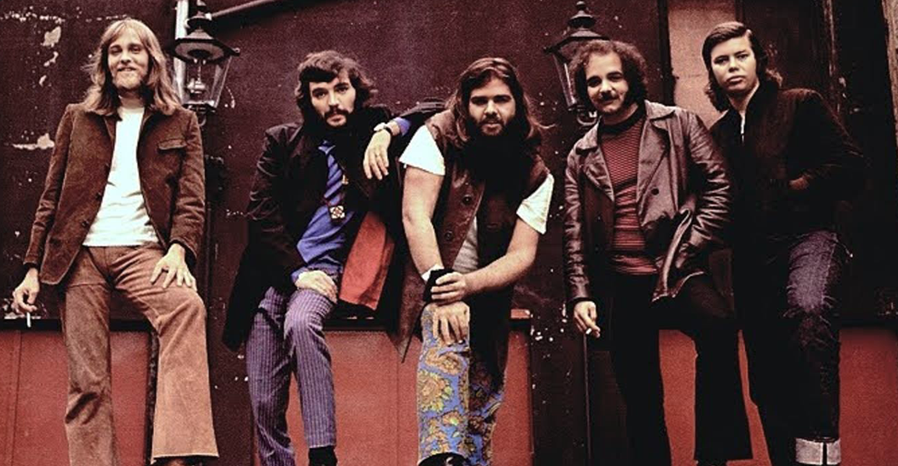Canned Heat: Overview and Impact as Music Artists
Canned Heat, formed in Los Angeles in 1965, is an American blues-rock band known for its deep appreciation and revival of traditional blues music. Founded by blues enthusiasts and record collectors Alan “Blind Owl” Wilson and Bob “The Bear” Hite, the band became famous for its electrified boogie sound and dedication to American blues traditions. With hits like “On the Road Again” and “Going Up the Country,” Canned Heat gained popularity in the late 1960s and early 1970s, securing a lasting legacy as one of the premier blues revival bands of their time. Their performances at major festivals, including Woodstock, helped cement their reputation as passionate interpreters of the blues.
Key Phases in Canned Heat’s Career
- Formation and Early Success (1965-1967): Formed out of a shared love for blues music, Canned Heat was named after Tommy Johnson’s song “Canned Heat Blues.” Their self-titled debut album, Canned Heat (1967), introduced their heavy blues-rock sound to the public. The band quickly attracted attention for its covers of classic blues songs and dedication to bringing authentic blues music to rock audiences.
- Breakthrough with Hits and Woodstock (1968-1970): Canned Heat’s second album, Boogie with Canned Heat (1968), featured their breakthrough hit, “On the Road Again,” which became a Top 20 hit in the U.S. and reached audiences worldwide. The following year, they released Living the Blues (1968), featuring “Going Up the Country,” which became a major anthem of the counterculture movement and was performed at the Woodstock Festival in 1969. Their energetic live performances, including their iconic set at Woodstock, established them as leaders in the blues-rock movement and helped them reach a wider audience.
- Tragedy and Lineup Changes (1970s): Canned Heat faced significant challenges in the 1970s, with the tragic loss of key members Alan Wilson, who died in 1970, and later, Bob Hite, who died in 1981. Despite these setbacks, the band continued to tour and record, with various lineup changes over the years. Guitarist Harvey Mandel, bassist Larry Taylor, and drummer Adolfo “Fito” de la Parra became mainstays, helping to keep the spirit of Canned Heat alive and evolving.
- Continued Influence and Legacy (1980s-Present): Despite lineup changes and the deaths of founding members, Canned Heat has continued to tour and perform, keeping their music and love for the blues alive. With de la Parra as the longest-serving member, the band’s lineup has featured various talented blues musicians, bringing their sound to new audiences and continuing their mission to honor and promote traditional blues music.
Musical Style and Themes
Canned Heat is known for its distinctive blend of blues, boogie, and rock with heavy influences from early Delta blues and Chicago blues artists like Muddy Waters, John Lee Hooker, and Howlin’ Wolf. The band’s style includes harmonica-driven melodies, hypnotic guitar riffs, and repetitive “boogie” beats. Songs like “On the Road Again” showcase their trademark sound, with Wilson’s falsetto vocals and the band’s strong rhythm section creating a trance-like quality that became their signature. The band’s lyrics often celebrate themes of freedom, wanderlust, and the countercultural spirit of the late 1960s.
Legacy and Influence
- Pioneers of the Blues Revival Movement: Canned Heat played a significant role in the 1960s blues revival, bringing attention to traditional American blues music and introducing it to a wider rock audience. Their commitment to the blues influenced contemporary musicians and sparked interest in classic blues among younger generations. Canned Heat’s collaboration with blues legend John Lee Hooker, resulting in the album Hooker ‘n Heat (1971), was one of the first major collaborations between rock and blues artists and remains a landmark in blues history.
- Influence on Psychedelic Rock and Jam Bands: Known for their extended live jams and improvisational style, Canned Heat’s approach to blues-rock influenced the psychedelic rock scene as well as future jam bands like the Grateful Dead and Phish. Their boogie-style jams created a template for long-form improvisational music, inspiring bands that embraced a similar experimental ethos in their performances.
- Iconic Counterculture Symbols: Songs like “Going Up the Country” became associated with the countercultural and anti-establishment movements of the 1960s, with the song being an unofficial anthem of the Woodstock Festival. This association helped Canned Heat become symbols of the free-spirited, socially conscious youth movement, linking their music with the ideals of freedom, exploration, and social change.
- Enduring Influence and Continued Relevance: Canned Heat’s dedication to blues and roots music has made them enduring figures in rock history, with a fanbase that continues to appreciate their contribution to blues-rock. Their music is still widely covered and celebrated, especially for its authentic portrayal of the blues and for highlighting the importance of America’s musical roots.
Conclusion
Canned Heat’s legacy as a blues-rock band is a testament to their love for traditional blues and their pioneering role in popularizing it among rock audiences. Their unique boogie sound, combined with their dedication to the countercultural ideals of the 1960s, created a lasting impact on the music world. They remain respected for their contributions to blues, rock, and the cultural landscape, with an influence that continues to inspire musicians and fans around the world.
References:
- Canned Heat (1967). Canned Heat. Liberty Records.
- De la Parra, A. (2000). Living the Blues: Canned Heat’s Story of Music, Drugs, Death, Sex, and Survival. Canned Heat Publications.
- Wolkin, R. & Keenom, D. (1995). Blind Owl Blues: The Mysterious Life and Death of Alan Wilson. BeeCool Publishing.
- “Canned Heat at Woodstock: A Counterculture Celebration.” Rolling Stone, 1969


Leave a Reply